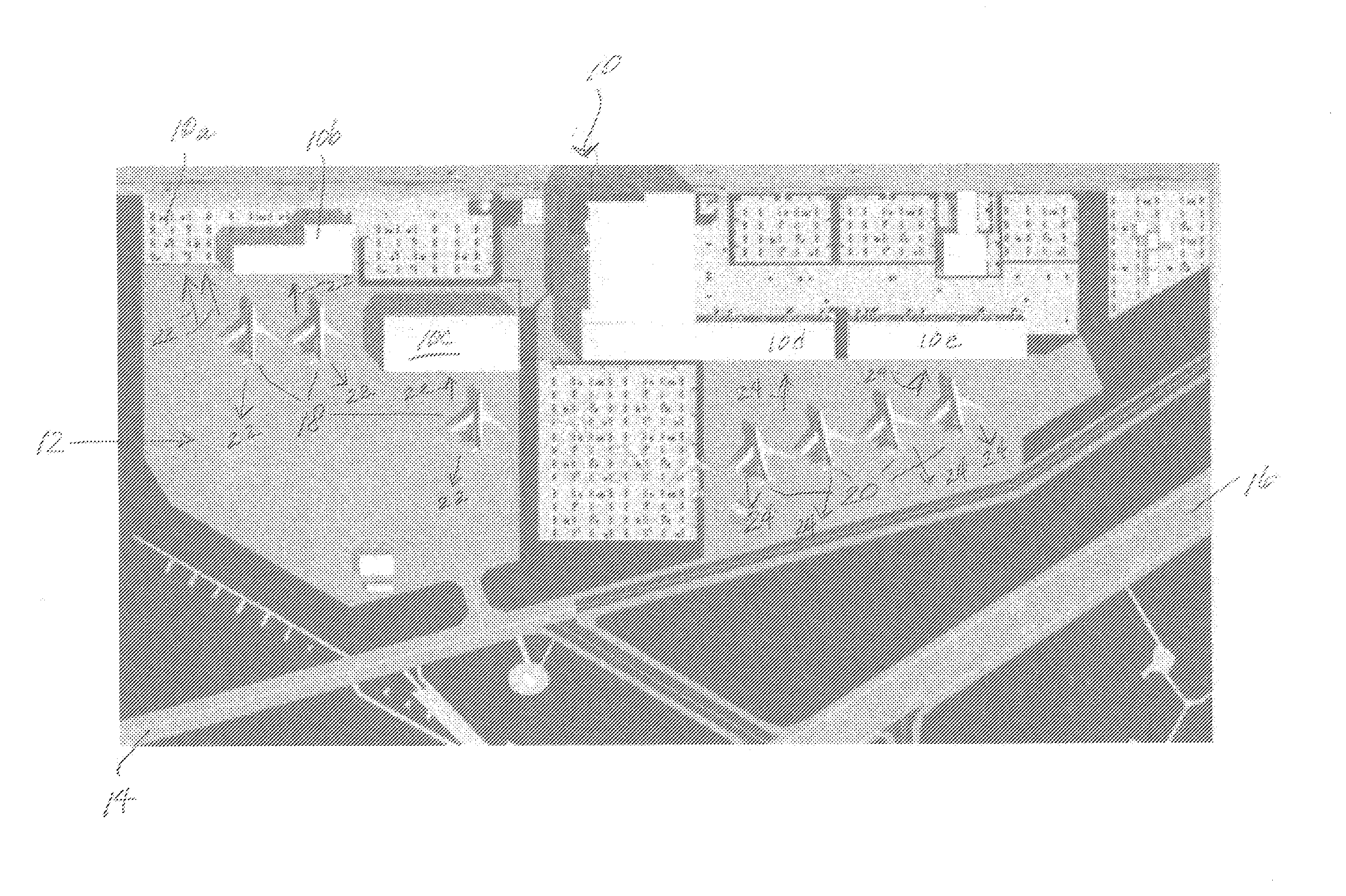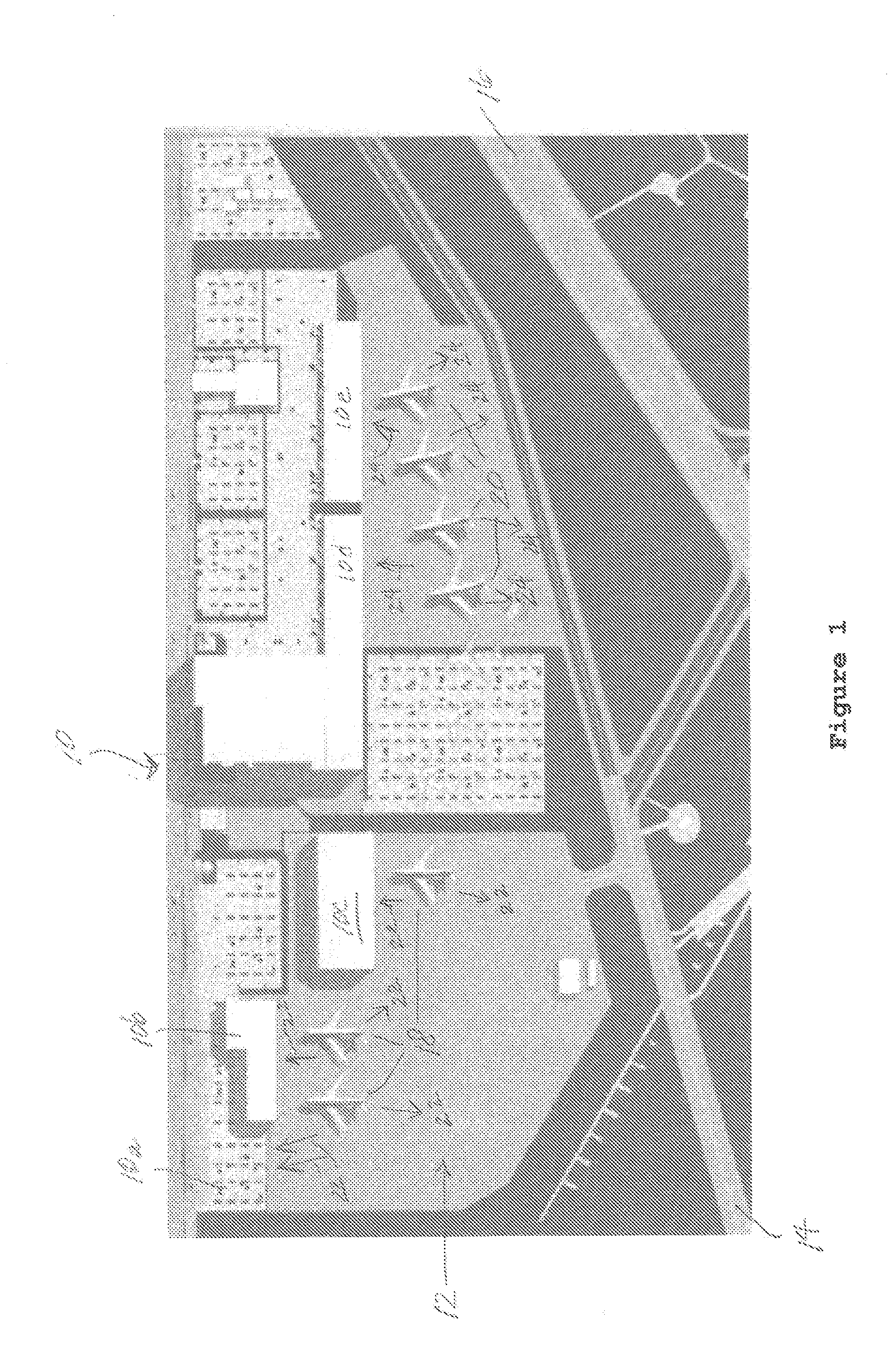Method for improving overall airport air quality during aircraft ground operations
a technology for air quality and ground operations, applied in the field of air quality at airports, can solve the problems of airport air pollution adverse health effects, increased local ambient air pollution levels at and around airports, and increased noise and air pollution produced by aircraft, etc., and achieve the effect of improving air quality
- Summary
- Abstract
- Description
- Claims
- Application Information
AI Technical Summary
Benefits of technology
Problems solved by technology
Method used
Image
Examples
Embodiment Construction
[0018]Airport air quality is affected by emissions from sources other than aircraft; however, aircraft account for the substantial majority of the emissions that can adversely affect airport air quality. Ground support vehicles and equipment powered by fossil fuels can also negatively affect airport air quality during ground operations. The air quality in and around airports is negatively impacted by air polluted by emission from aircraft and ground vehicles. This polluted air is available to be drawn into airport terminal buildings, as well as into a range of airport auxiliary buildings and other facilities, such as, but not limited to, hangars, repair facilities, FAA facilities, parking garages, and control towers. The air quality of other buildings that may be located adjacent to or very near airports, for example hotels and office buildings, can be negatively affected when the air drawn into a building's air circulation has undesirable levels of airport emissions. While air draw...
PUM
 Login to View More
Login to View More Abstract
Description
Claims
Application Information
 Login to View More
Login to View More - R&D
- Intellectual Property
- Life Sciences
- Materials
- Tech Scout
- Unparalleled Data Quality
- Higher Quality Content
- 60% Fewer Hallucinations
Browse by: Latest US Patents, China's latest patents, Technical Efficacy Thesaurus, Application Domain, Technology Topic, Popular Technical Reports.
© 2025 PatSnap. All rights reserved.Legal|Privacy policy|Modern Slavery Act Transparency Statement|Sitemap|About US| Contact US: help@patsnap.com


